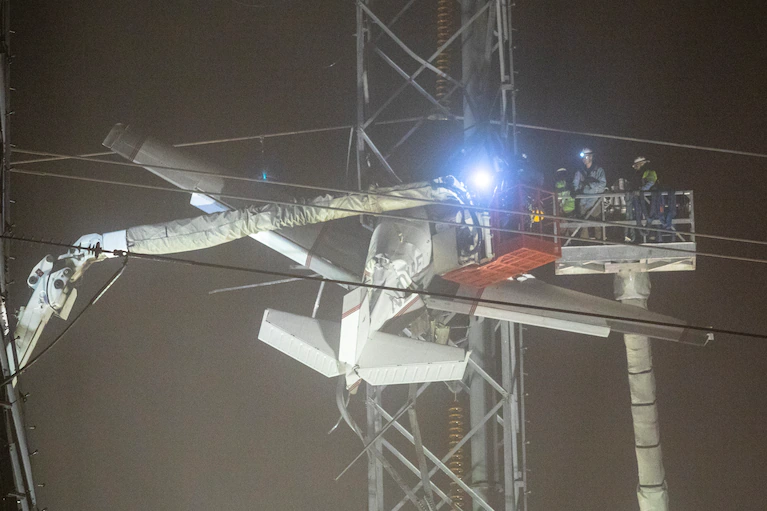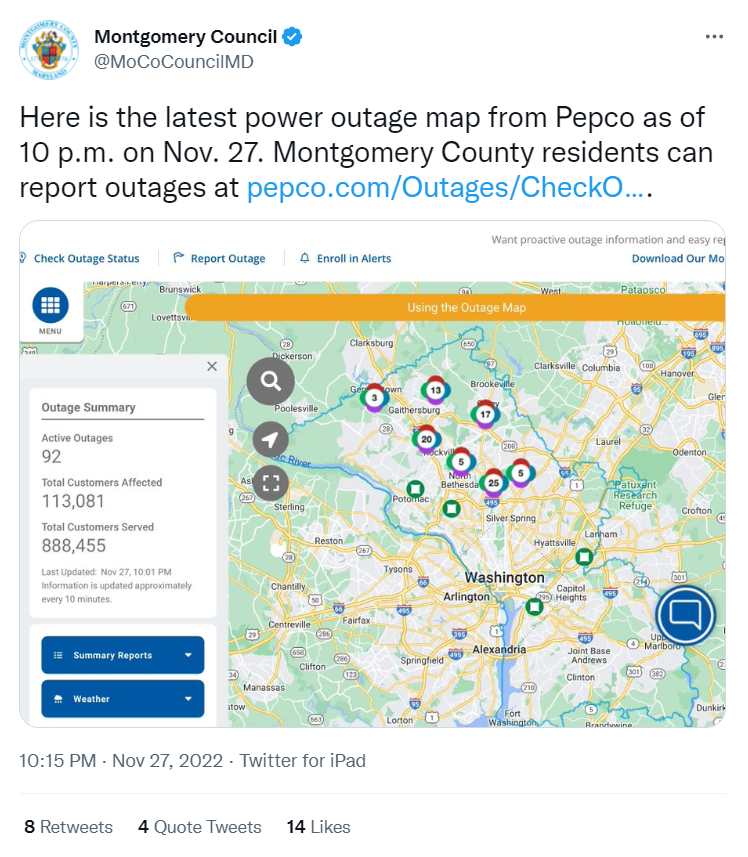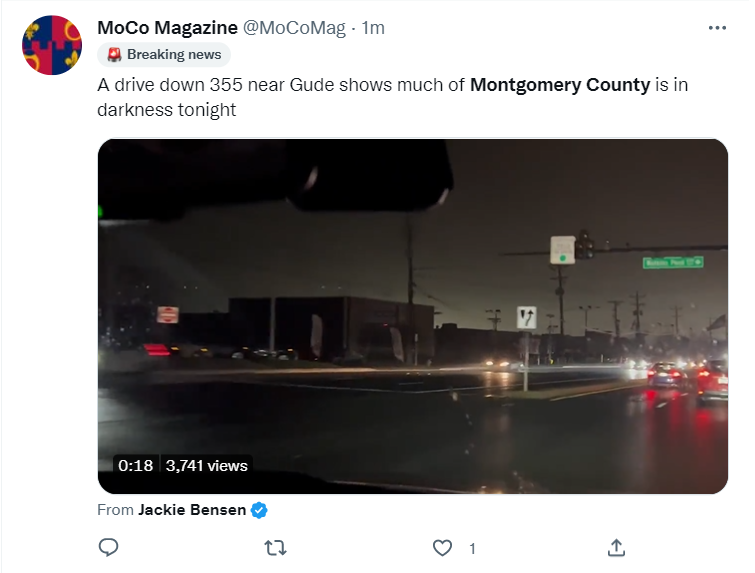By Adam Pagnucco.
Last night, a small plane crashed into a power transmission tower in Montgomery Village, knocking out electricity to more than 120,000 customers. The county reported that roughly 125 traffic signals were without power and both MCPS and Montgomery College closed the next day. It’s amazing that one event of this nature could produce such disruption, but it did.

The Washington Post’s photo of the crashed plane. Credit: Robb Hill.
This plane crash was unusual, but power outages can and do happen. Those of us who lived in the county a decade ago remember frequent outages, such as those occurring during the 2012 derecho, but also many clear sky outages. Who wants to go back to those days?
That’s a real question given the fact that the county council is scheduled to vote on a bill mandating all-electric buildings in most new construction tomorrow. I have written extensively on this bill and one question that has not been answered is its impact on the electric grid. BGE said all-electric buildings would necessitate spending billions to upgrade its grid and Pepco asked for the council to pause its work on the bill. Nevertheless, the council is poised to pass it in a lame duck session.

In this tweet, the county council itself acknowledged that the outage affected areas from Germantown to Olney and all the way down to Wheaton.
The General Assembly provides a useful model for balancing the issues of electric reliability and climate change. Their Climate Solutions Act of 2022 contains a holistic package of measures, but it also provides for robust research on issues affecting the electric grid. They include:
1. An Energy Resilience and Efficiency Working Group which will advise the state on “issues and opportunities related to energy infrastructure improvements, transmission efficiency improvements, and battery backup viability.”
2. A General System Planning Study to be completed by the Public Service Commission with utilities “to assess the capacity of each company’s gas and electric distribution systems to successfully serve customers under a managed transition to a highly electrified building sector.”
3. A Building Energy Transition Implementation Task Force “to (1) study and make recommendations regarding the development of complementary programs, policies, and incentives aimed at reducing GHG emissions from the building sector in accordance with the bill; (2) make recommendations on targeting incentives to electrification projects that would not otherwise result in strong returns on investment for building owners; and (3) develop a plan for funding the retrofit of covered buildings to comply with building emissions standards, as specified.”
Once these reports and others are in hand, the General Assembly and the Moore administration will have the data they need to implement further climate measures. This is a reasonable approach that balances power reliability and movement away from fossil fuels. The Sierra Club called the Climate Solutions Act which launched these studies “a huge accomplishment” and “landmark legislation.” By contrast, the county’s legislation calls for none of this.

Lights out last night.
The council would be wise to wait for the state to complete its work. Instead, they are about to react to the biggest power outage in years by piling more demand onto the electric grid with no idea of what that might mean. I said it before and I’ll say it again: is this any way to run a government?
